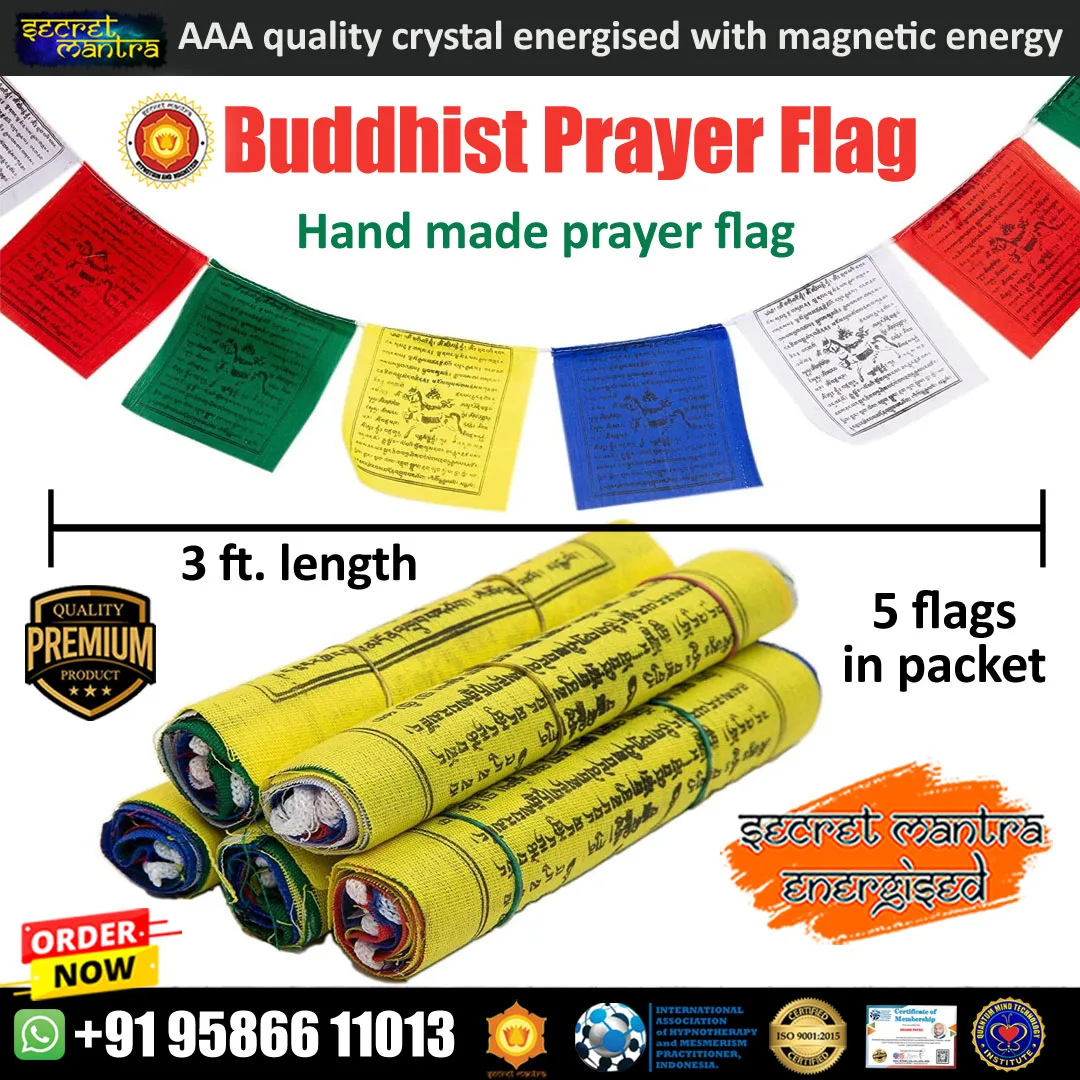Description
Tibetan Prayer Flags: A Detailed Overview
Introduction
Tibetan prayer flags are vibrant, symbolic textiles integral to Tibetan Buddhist culture, primarily used to disseminate prayers and blessings through the wind. Originating from ancient Bon traditions and later integrated into Tibetan Buddhism, these flags embody spiritual, cultural, and environmental significance.
Physical Description
-
Colors and Elements: Arranged in a specific order (blue, white, red, green, yellow), each color symbolizes an element and direction:
-
Blue: Sky/space (center)
-
White: Air/wind (east)
-
Red: Fire (south)
-
Green: Water (north)
-
Yellow: Earth (west)
-
-
Symbols and Texts: Feature mantras (e.g., “Om Mani Padme Hum”), images of deities, the Wind Horse (Lungta), and the Four Dignities (garuda, dragon, tiger, snow lion). The Eight Auspicious Symbols (Ashtamangala) may also appear.
Types of Flags
-
Horizontal (Lungta): Strung between poles, often in high places.
-
Vertical (Darchor): Attached to poles, commonly near monasteries or stupas.
Historical and Cultural Context
Rooted in Bon animism, prayer flags were adapted by Tibetan Buddhism around the 7th century. They align with Tantric practices, using symbolism to propagate Buddhist teachings and invoke positive energies.
Uses and Purposes
-
Spiritual: The wind carries printed mantras, blessing the environment and all beings, promoting peace, compassion, and wisdom.
-
Ceremonial: Used during festivals (e.g., Losar), life events, and healing rituals to harmonize energies and invite good fortune.
-
Environmental: Believed to balance natural elements and ward off negativity.
Rituals and Practices
-
Hanging: Placed in high, windy locations (mountains, rooftops) to maximize prayer dissemination.
-
Replacement: Renewed during auspicious times (e.g., Tibetan New Year). Old flags are burned respectfully, symbolizing impermanence and releasing prayers.
Ethical and Environmental Considerations
-
Respectful Use: Flags should not be treated as decor; placement and disposal follow traditional protocols.
-
Materials: Traditionally made from biodegradable cotton with natural dyes. Modern synthetic variants raise environmental concerns.
Symbolic Teachings
Flags serve as reminders of Buddhist principles, such as interconnectedness and impermanence, as they fade over time. They emphasize altruism, benefiting all sentient beings rather than individual gain.
Conclusion
Tibetan prayer flags are profound spiritual tools, blending art, ecology, and philosophy. Their enduring presence in Himalayan cultures underscores a commitment to universal well-being and harmony with nature. Respecting their cultural significance ensures the preservation of this sacred tradition.








Reviews
There are no reviews yet.